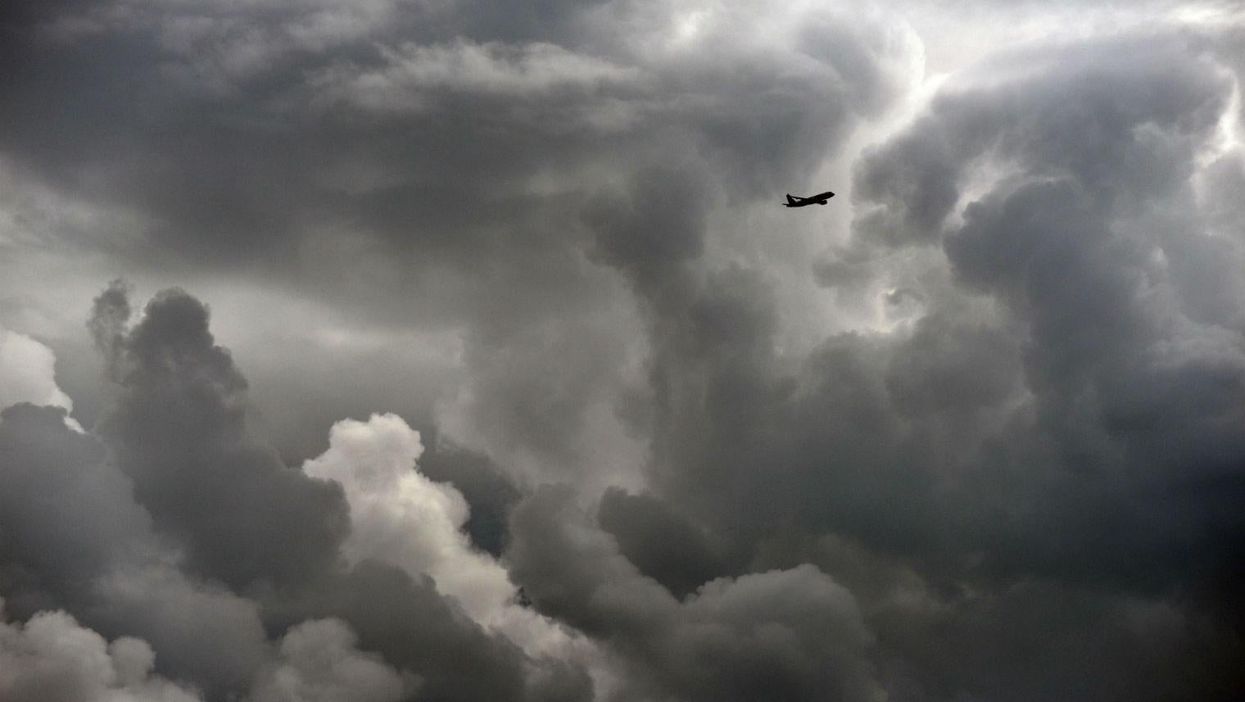News
Bethan McKernan
Apr 07, 2016

Picture: REMY GABALDA/AFP/Getty Images
There is no one who's ever experienced a bumpy plane ride and not had a moment where you've thought to yourself, right then. This is it.
But turbulence, as scary as it seems when your stomach is jumping into your mouth and the fight attendant has just fallen over, really isn't as bad as it seems - and askthepilot.com has, err, asked pilot Patrick Smith, author of Cockpit Confidential, about what's going on in the cockpit while you're sitting in economy re-finding God:
Turbulence is completely normal
Wind, storms, the jet stream, nearby mountains, upward, downward and thermal air currents and changes in wind speed and direction all mean that turbulence is 100 per cent an expected part of being in the air.
But yes, it can happen very suddenly or unexpectedly
Most turbulence is planned for thanks to forecasts before take off, and ground staff, other planes and cockpit controls allow pilots to stay updated throughout the journey.
However, saying that, clear air turbulence, which occurs in perfect visibility, doesn't get picked up by radar - which leaves little time to warn passengers they're in for a few bumps.
Turbulence won't cause your plane to crash
Planes are designed to withstand extreme stresses and temperatures. The amount of force needed to rip parts off a plane or cause it to crash just doesn't occur in storms.
Even in extremely rough air, the wing is not going to break off and the plane is not going to flip upside-down.
It doesn't mean the pilots are fighting to control the plane, even if it feels like it
Planes are designed with 'positive stability', which means they gravitate to the set flight course, and the controls wish to return to it if they deviate slightly. For this reason, the plane and its pilots ride out the patch of rough air - which is uncomfortable but not dangerous.
To a passenger it might feel like you're being thrown around, but even in moderate levels of turbulance, it's unlikely the plane has shifted altitude by more than six metres.
Analogies like driving over potholes or waves at sea are unhelpful, Smith says:
I don’t like these comparisons, because potholes routinely pop tires, break axles and ruin suspensions, while ships can be capsized or swamped. There are no accurate equivalents in the air.
If you wear your seatbelt, you'll be fine
Same advice goes for planes as it does for cars - just keep it on and you're very unlikely to get hurt. Only 58 people out of 800 million flyers were injured by turbulence in US air space last year, and two thirds of those weren't wearing their seatbelts.
Pilots keep theirs on at all times too.
HT: Business Insider
More: The reason why aeroplanes still have ashtrays
More: Welcome to the hellish aeroplane seating plan of the future
Top 100
The Conversation (0)













Donald Trump explodes at 'obnoxious' reporter